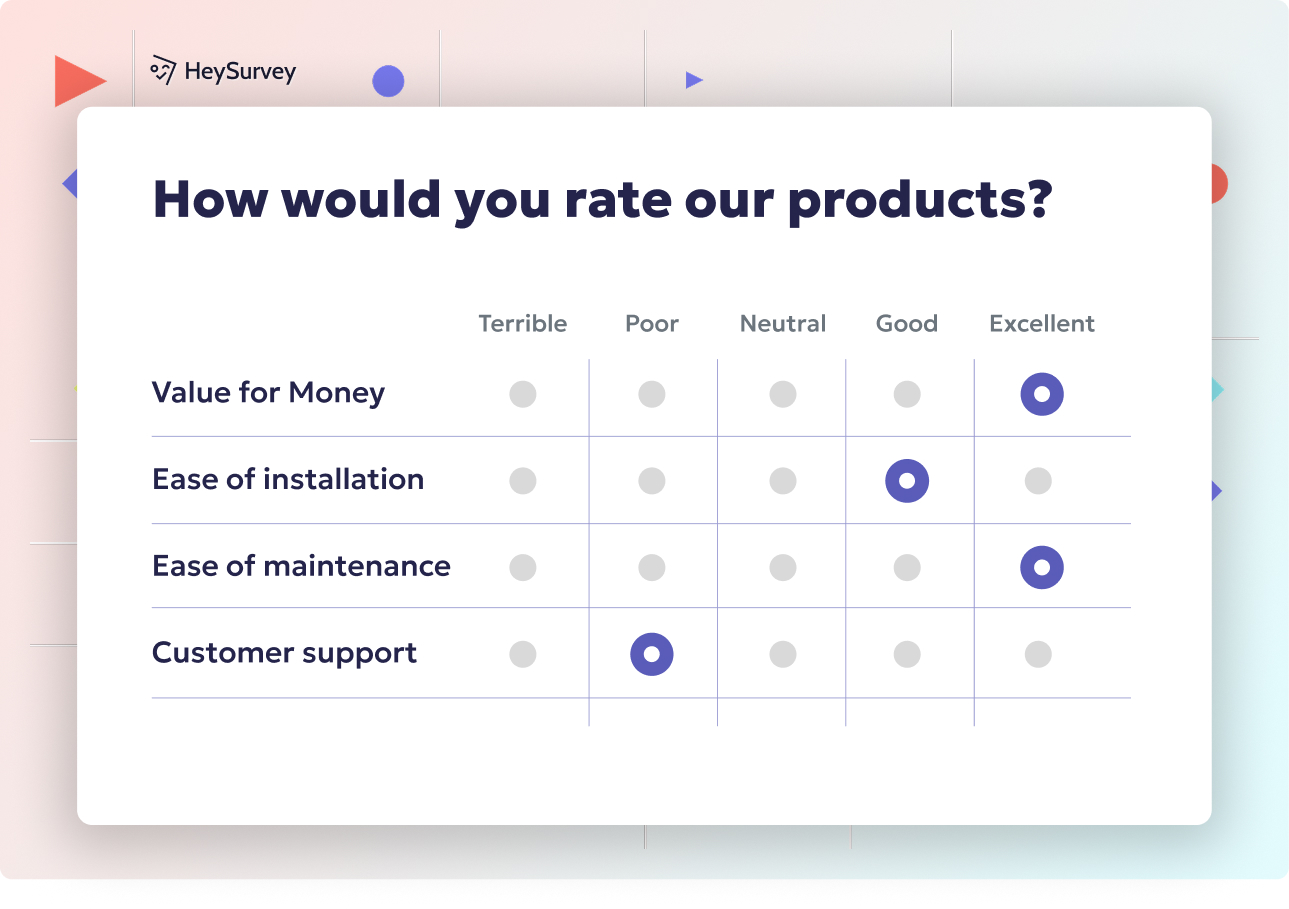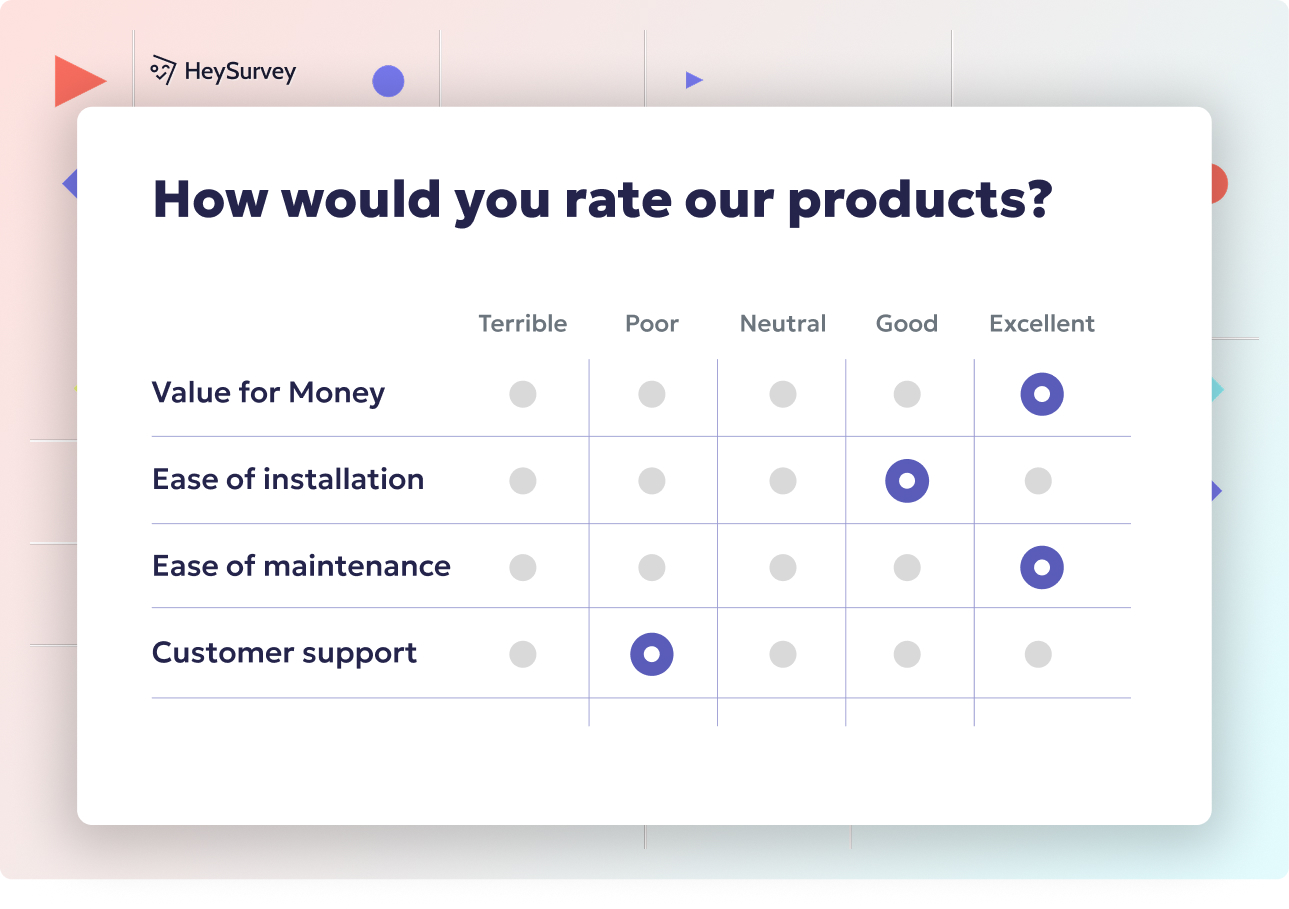31 Physician Satisfaction Survey Questions to Boost Engagement
Explore 25 physician satisfaction survey questions designed to measure and improve doctor engagement, work-life balance, burnout, and more.
Physician satisfaction surveys are more than just routine check-ins—they’re the heartbeat of every thriving health system. By capturing candid feedback, these doctor engagement tools reveal what’s working, what’s wearying, and what keeps top talent onboard. Whether you call it a “physician engagement survey” or a “doctor job satisfaction questionnaire,” the results shape everything from patient outcomes to staff retention. The timing is just as crucial, with surveys best conducted annually, after technology rollouts, or following major policy changes. In this complete guide, you’ll explore eight essential types of physician satisfaction surveys to transform health-system provider feedback into powerful action.
Job Satisfaction Surveys
Why and When to Use This Survey Type
Job satisfaction surveys set the stage for meaningful change by capturing the pulse of morale and workplace fulfillment. These assessments offer a first glimpse into how physicians truly feel about their day-to-day routines. If you need to understand how leadership transitions impact doctors or want a baseline for departmental culture, this is your go-to tool.
It’s best to run these surveys:
During annual review cycles to establish year-to-year trends.
After new leadership steps in, ensuring smooth transitions.
When you sense collective “rough days,” and need to check on morale.
To measure the impact of organizational initiatives targeting physician engagement.
By capturing this feedback, leaders can identify issues before they snowball—boosting both retention and recruitment.
5+ Sample Job Satisfaction Questions
When creating a doctor morale survey, select targeted questions to reveal the full spectrum of satisfaction. A simple 5-point Likert scale works wonders for benchmarking these responses.
How satisfied are you with your current clinical responsibilities?
Do you feel your workload is manageable?
How valued do you feel by hospital leadership?
Rate the level of collaboration within your department.
Would you recommend this organization to fellow physicians?
Tip: Stick to a 5-point Likert scale. It’s a classic for a reason—quick, reliable, and crystal clear.
These questions dig deep into the roots of daily doctor happiness. Insight here means fewer resignations, happier teams, and, ultimately, better patient care.
A 2023 AMA survey found that physician burnout decreased to 48.2%, with job satisfaction rising to 72.1%. (advisory.com)
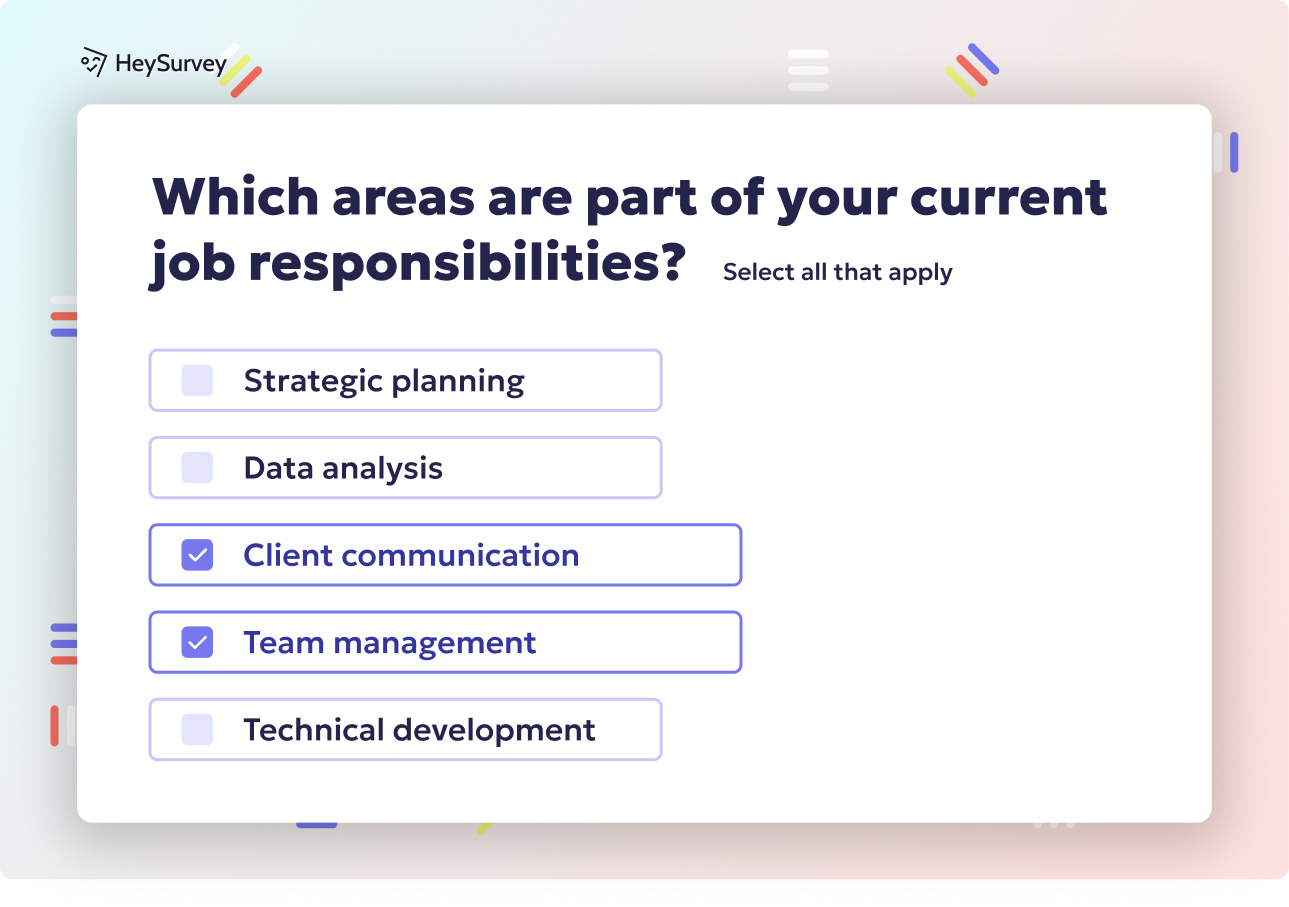
How to Create Your Physician Satisfaction Survey with HeySurvey
Ready to build your very own physician satisfaction survey but new to HeySurvey? No worries! Here’s a simple 3-step guide to get you from zero to published survey in no time—with a couple of bonus tips to make it shine.
Step 1: Create a New Survey
Head over to HeySurvey and click Create Survey.
Choose a starting point: pick an empty sheet for full customization, or grab a pre-built template geared toward physician or healthcare surveys.
Give your survey an internal name—something like “Physician Satisfaction Fall 2024”—so you can easily spot it later.
That’s it! You’re now in the Survey Editor, ready to design your masterpiece.
Step 2: Add Your Questions
Click Add Question at the top or between existing questions.
Select the type of question you want: common picks for satisfaction surveys are Scale (like a Likert scale), Choice (single or multiple answers), and Text (for open feedback).
Type in your physician survey questions—feel free to use the sample question lists we covered earlier in this guide.
Mark questions as required if they’re essential, so respondents can’t skip them.
Use drag-and-drop to reorder questions until the flow feels just right.
Step 3: Publish Your Survey
Hit Preview to see what your survey looks like for doctors—check layout and wording.
When you’re happy, click Publish.
You’ll get a shareable survey link to email out, embed on your intranet, or post wherever your physicians prefer.
To collect results and track responses, you’ll need an account; signing up takes just a minute.
Bonus Tip 1: Apply Branding
In the Designer Sidebar, upload your organization’s logo to top-left corner for a polished look.
Customize colors and fonts to match your hospital or health system’s brand identity.
Add background images or customize question cards for a more engaging experience.
Bonus Tip 2: Define Settings or Set Branches
Open the Settings Panel to fine-tune when your survey opens and closes, limit the number of responses, and even redirect physicians to a thank-you page after completion.
For tailored experiences, use branching to direct respondents to different questions based on their answers—great for drilling into specific areas like burnout or compensation without overwhelming everybody.
Now that you know the ropes, click the button below to jumpstart your physician satisfaction survey with a ready-to-go HeySurvey template. It’s as easy as 1-2-3!
Work-Life Balance Surveys
Why and When to Use This Survey Type
Work-life balance surveys are your secret weapon for preventing burnout before it begins. If you’re curious how often work invades personal time or whether new scheduling policies are a hit (or a miss), this survey is the answer.
Deploy these surveys:
Immediately following updates to on-call schedules or shift policies.
After tracking spikes in overtime or extended hours.
If there’s chatter about “work-life boundaries” eroding.
Ahead of wellness initiatives, to measure progress over time.
Finding the balancing point between clinical demand and personal sanity is every hospital’s dream—but only real data can get you there.
5+ Sample Work-Life Balance Questions
A physician work life balance survey should draw out real-life experience—without turning into a test of patience. Use these questions to chase honest, actionable feedback:
How often do work duties interrupt your personal life?
Rate your satisfaction with current shift scheduling.
Do you have adequate time for documentation within work hours?
How restful are your on-call periods?
How effectively does leadership support flexible scheduling?
Physicians who have a say in these matters are more resilient—and far less likely to daydream about greener pastures.
A study found that 62.9% of Jordanian physicians experience work-life conflict, negatively correlated with age, number of children, and years in practice. (pubmed.ncbi.nlm.nih.gov)
Compensation & Benefits Satisfaction Surveys
Why and When to Use This Survey Type
Compensation and benefits are among the most emotionally charged topics in any doctor engagement survey. Physicians are wired to seek fairness and transparency, not just earnings. This survey turns the spotlight onto perceptions of equity and value, ensuring policies actually work for your team.
The best times to run these surveys are:
Soon before contract renewal cycles.
Prior to changing the compensation or incentive model.
Following industry-wide pay structure updates.
To identify disparities and act on any bubbling discontent.
Transparent conversations about pay and perks soften the impact of organizational changes, while also strengthening trust.
5+ Sample Compensation Questions
Use these doctor job satisfaction questions to get a clear picture of your compensation landscape:
How satisfied are you with your base salary relative to workload?
Rate the transparency of the bonus structure.
Does the benefits package meet your needs?
How competitive is your compensation compared to market rates?
Do financial incentives align with patient-care quality goals?
If the answers reveal trouble spots, you have a golden opportunity to shape a rewards system that motivates top-level care.
Administrative Support & Resource Surveys
Why and When to Use This Survey Type
Administrative support surveys uncover the small stumbling blocks that can trip up the whole care process. Ask any physician—smooth processes and reliable support staff are the unsung heroes of a happy workplace. These surveys shed light on bottlenecks in clerical tasks, staffing levels, and crucial supplies.
Deploy these surveys:
After introducing a new patient flow or documentation process.
Times of cost-cutting or operational changes.
If you notice complaints about missing equipment or delayed labs stacking up.
To benchmark improvements in supporting roles over time.
A well-oiled admin machine frees up doctors to focus on what they do best: caring for patients.
5+ Sample Admin Support Questions
These questions will spotlight the real-world experience of your clinical teams:
How adequate is medical assistant support during clinics?
Rate the efficiency of scheduling services.
Do you have timely access to necessary medical supplies?
How responsive is administration to your feedback?
Are staffing levels sufficient to deliver quality care?
With honest answers, leadership finds the leverage points to supercharge support and nurture a positive culture.
A study found that physicians' satisfaction with administrative support significantly influences their overall job satisfaction and commitment. (ncbi.nlm.nih.gov)
Patient-Care Experience Surveys (from the Physician Viewpoint)
Why and When to Use This Survey Type
Physicians are constantly adapting to evolving care protocols, sometimes at dizzying speed. Patient-care experience surveys pull back the curtain on how system pressures affect your ability to deliver compassionate care. These insights come straight from the source—the providers themselves.
When’s the ideal moment?
Right after major policy changes that impact patient flow or bedside norms.
Following the launch of a new care coordination initiative.
If patient satisfaction scores hint at new patterns or problems.
To check alignment of clinical processes with frontline perspectives.
Physician responses help refine workflows and restore the doctor-patient connection when it’s threatened.
5+ Sample Patient-Care Questions
A strong health-system provider feedback form might include:
Do you have adequate time for face-to-face patient interaction?
How effective are current care-coordination processes?
Rate the support you receive in managing complex cases.
How often do administrative tasks distract from patient care?
How confident are you that patients leave with clear instructions?
When you capture provider perspective, you create space for real empathy, safety, and shared success.
Professional Development & Career Growth Surveys
Why and When to Use This Survey Type
Physicians are lifelong learners hungry for growth, not just busy people ticking boxes. Professional development surveys pick up where medical school left off—tracking opportunities, mentorship, and inspiration for the long haul.
Trigger these surveys:
After launching a new continuing medical education (CME) offering.
When piloting physician leadership programs.
As part of annual career planning conversations.
If turnover data points to limited advancement pathways.
Growth-minded doctors are not only more engaged, they’re also more likely to become champions for change.
5+ Sample Development Questions
Excellent physician engagement surveys make room for both learning and ambition:
How satisfied are you with available CME opportunities?
Rate the quality of mentorship within your department.
Do you receive constructive feedback for career advancement?
Is leadership supportive of your research interests?
How clear are the promotion criteria for physicians here?
Empowering physicians in these areas creates leaders, mentors, and clinical trailblazers.
Burnout & Well-Being Surveys
Why and When to Use This Survey Type
Burnout isn’t just a buzzword—it’s the silent thief of passion in medicine. Burnout and well-being surveys help organizations spot trouble early by tracking exhaustion, cynicism, and success. When stress is left unchecked, top performers slip through your fingers—sometimes for good.
Roll these surveys out:
Every quarter for ongoing monitoring.
Immediately after crisis periods, like pandemic waves.
Alongside new wellness program launches.
When you notice absenteeism, irritability, or changes in performance.
Doctor burnout surveys give voice to suffering while signaling that leadership is committed to clinician well-being.
5+ Sample Burnout Questions
Check-in regularly with a simple clinician well-being questionnaire to keep your finger on the organizational pulse:
How often do you feel emotionally exhausted by your work?
Do you experience depersonalization toward patients?
Rate your overall sense of personal accomplishment.
How supported do you feel in managing work-related stress?
How likely are you to seek well-being resources provided?
Give your team the space to speak up and begin meaningful recovery when needed.
Technology & EHR Usability Surveys
Why and When to Use This Survey Type
Electronic health record (EHR) systems and new tech platforms can be a blessing—or a headache. Technology satisfaction surveys home in on usability, integration, and the day-to-day digital doctoring experience.
Best times to send these out:
Following new EHR or telehealth platform launches.
Immediately after major software upgrades or patches.
To check effectiveness of pain-point fixes.
When complaints about “click fatigue” surface.
The right tech in the right hands makes care faster, safer, and (dare we say) a tad more fun.
5+ Sample Tech Satisfaction Questions
Level up your feedback game with these doctor-friendly queries:
How intuitive is the current EHR interface?
Rate the time required for documentation per patient.
Does the system integrate smoothly with other hospital tools?
How reliable is telehealth technology during virtual visits?
How well does IT support resolve technical issues?
Smart surveys help you improve technology—before it becomes a meme in the physician’s lounge.
Best Practices: Dos and Don’ts for Physician Satisfaction Surveys
Surveying doctors is part science, part art. Armed with the right best practices, you’ll ensure authentic feedback, actionable data, and enthusiastic participation.
Do:
Keep surveys anonymous to encourage radical honesty.
Mix Likert scales and open-ended items—numbers need stories!
Benchmark results to identify trends and celebrate wins.
Act quickly on feedback to signal respect and responsiveness.
Share action plans organization-wide so everyone’s in the loop.
Don’t:
Overwhelm participants with a question avalanche (keep it under 10 minutes).
Punish poor feedback or tie it to paychecks—it’s about improvement.
Delay data crunching or let feedback gather dust.
Ignore qualitative insights—those side-comments are gold.
Ever, ever share identifiable answers.
Short, snappy, and secure physician satisfaction surveys win the day, especially when you meet busy doctors where they are: in the inbox, on mobile, and occasionally, at the end of a very long shift.
To unlock the full potential of doctor engagement, let these survey types and best-practice approaches inspire your next round of employee engagement surveys.
Get started today by building your own customized physician satisfaction survey from these question banks. Doctor engagement isn’t just worth measuring—it’s worth improving, one thoughtful question at a time.
Related Employee Survey Surveys
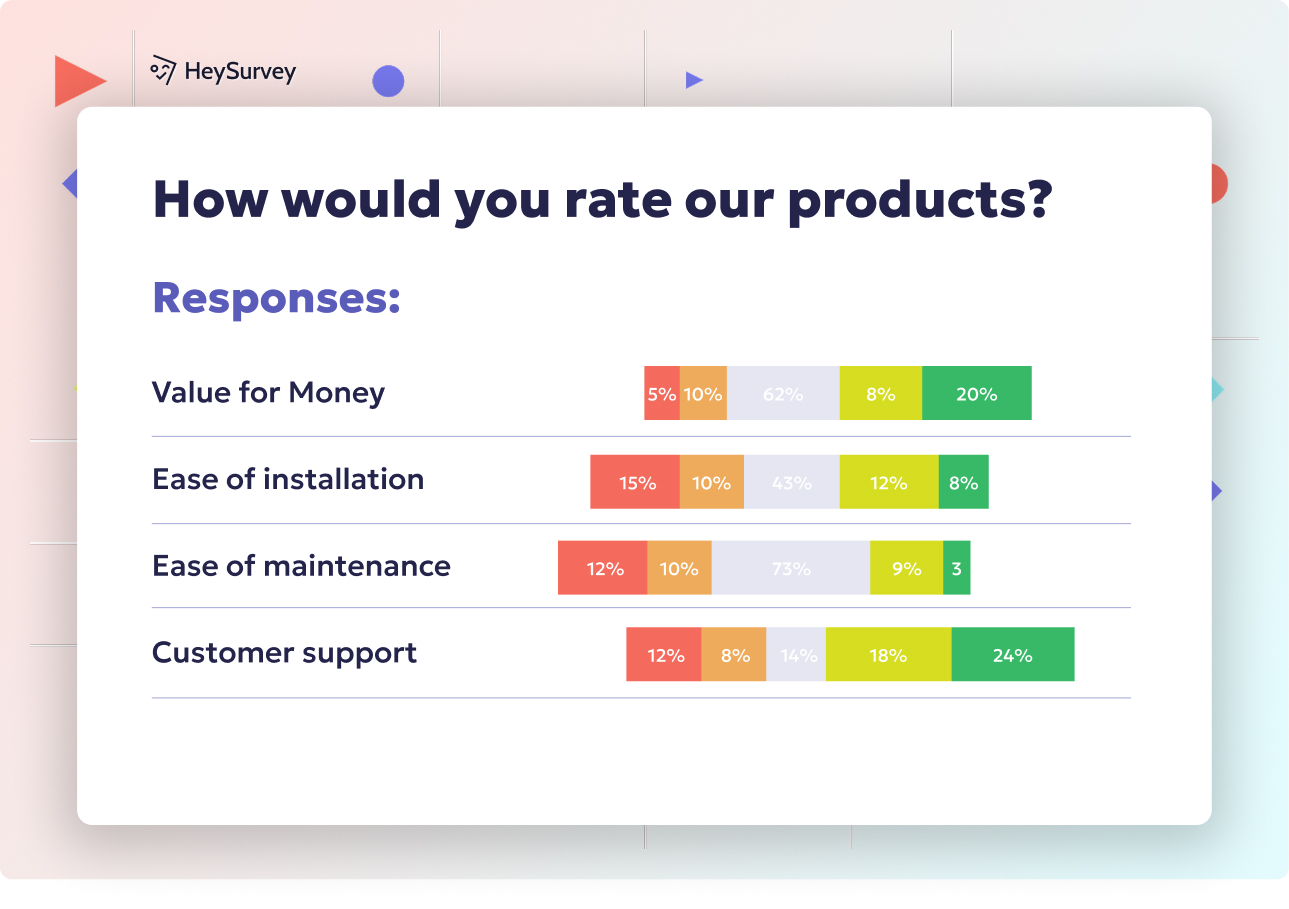
29 Essential Post Mortem Survey Questions for Project Success
Discover 25+ essential post mortem survey questions to improve projects, boost team morale, and d...
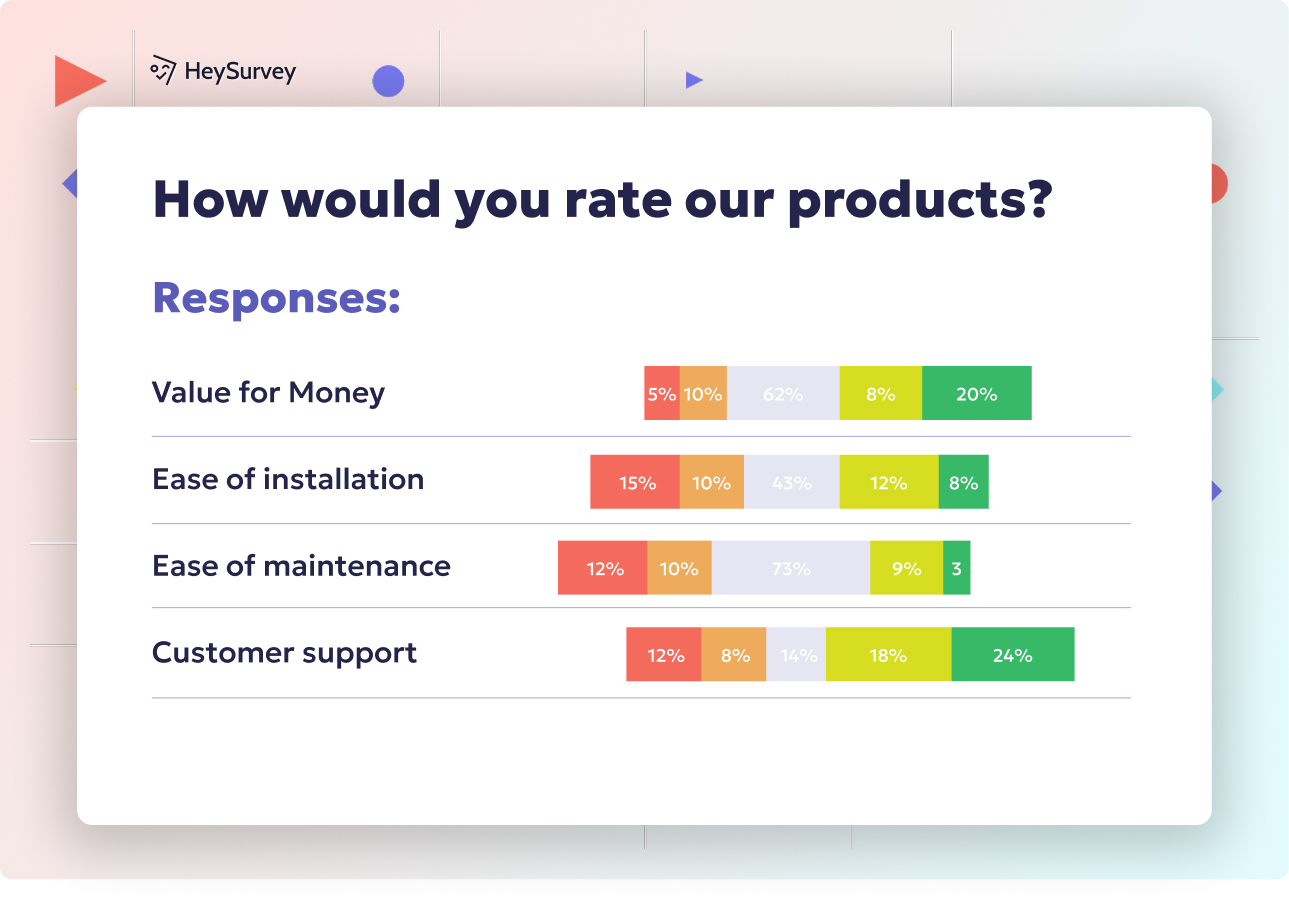
31 Change Readiness Survey Questions to Boost Your Success
Discover 25+ sample change readiness survey questions to assess attitudes, barriers, and confiden...
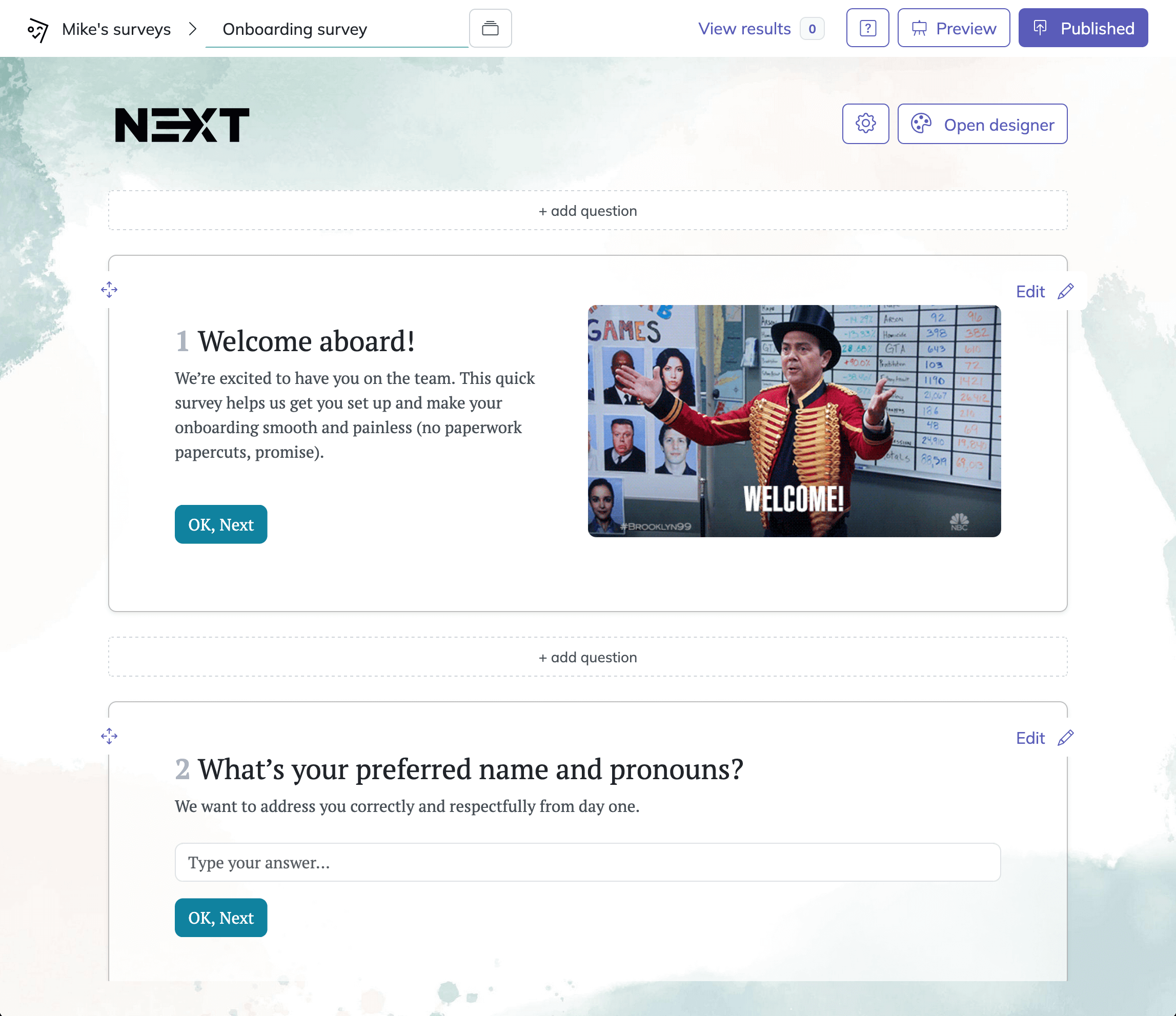
31 Retreat Survey Questions to Collect Actionable Feedback
Discover 26 essential retreat survey questions to gather actionable feedback before, during, and ...

